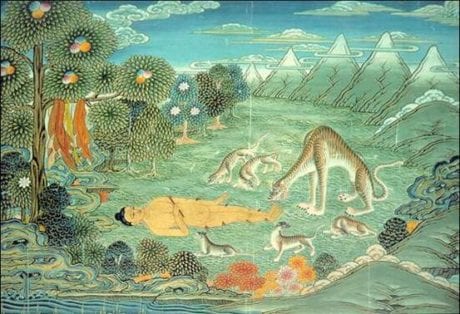Learning Buddhadharma can be done in a number of ways. Especially in these modern times. We can go to retreats, listen to teachings, take courses, and of course read lots of books. Phakchok Rinpoche reminds us here, however, that learning Dharma actually means understanding the essence: the crucial points.
It’s not about how many years we study and practice or how much book knowledge we have. Instead, Rinpoche asks us to consider how effective our Dharma study has been.
Learning Buddhadharma: Understanding the Essence of Stories

We can use the analogy of exercise. You’ve probably heard that these days more and more scientists and trainers say that it is not necessary to exercise for long periods of time. Instead, they say that we can get more benefit from short periods of correctly done power exercise.
We used to think more time is better, but that appears not to be the case. Similarly, we might want to think about how we study and practice the Dharma. Rinpoche notes that Tibetan lamas often teach by telling stories, rather than engaging in heavy philosophy. And we often do remember the stories better. They can be entertaining, sound inspiring, or even unbelievable. Throughout history, Buddhist teachers have used stories to instruct listeners.
When we hear a story, we can ask ourselves a question. Why did the lama tell the story? What was the essence?
When we think about learning the Dharma, what comes to our mind? Do we picture a Buddha statue or think of a text? Or do we imagine someone meditating? If someone asks, “What is Dharma?” what is our response?
Try this at home: Reflect on this question seriously for a moment and think about what comes to your mind. What does Dharma mean to us? What’s our split-second response? If we can’t really come to a clear answer quickly, then perhaps we’re not really understanding correctly.
Learning Buddhadharma: Understanding the Mind
Rinpoche says that Dharma to him means “my mind.” That’s it. It means our own mind. Often we may think Dharma is what the Buddha taught, but that’s not a very helpful answer, is it? We often recite the lines, “Don’t do evil actions, do good actions, and tame your mind.” This is better and summarizes the Buddha’s teaching well, but it still is a little vague.
Instead, simply think, “Mind!” It’s really that simple, but it’s also very profound. When we carefully reflect on this, we can realize that everything we practice comes down to the mind. If we have this outlook, then all the Dharma becomes alive.
Reflection Exercise
Think about how you perceive Dharma over the course of the next week. Does the challenge shift your understanding? How do you understand the point: mind? What does “essence” mean to you?
And why do you think this understanding prevents the Dharma from feeling “dead”?










Responses